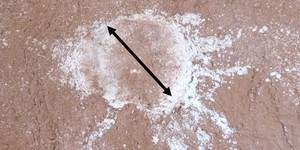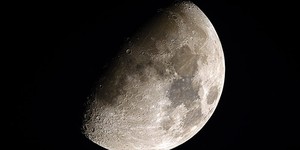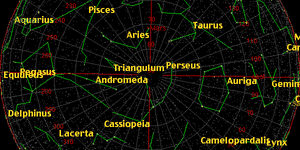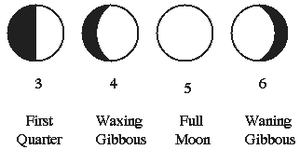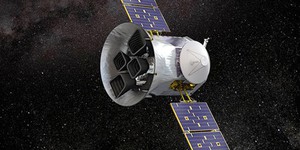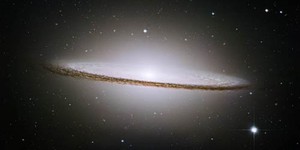Others Like “Lunar Crater Counting” (top 20 results)
|
Have you ever heard someone say that the moon is made of cheese? Even though the craters on the surface of the moon resemble holes in Swiss cheese, we know that this common myth is not true. Find out how craters are formed and why they are different sizes by doing this simple science project.
Read more
Sometimes a full moon can be so bright, you can walk around in the dark without a flashlight. How much brighter is a full moon than the other phases of the moon? How is the brightness of the moon measured?
Read more
Do you like to look up into the night sky? There are so many stars, it can be mind boggling! Some ancient people marked time by the changes in star patterns. We still use changes in constellation patterns to mark astronomical time. Do constellations change more in one hour, one day, one month, or one year?
Read more
Everyone loves looking at the full moon, but are these nights the best time to go stargazing? Can the moon interfere with certain astronomical observations?
Read more
One of my favorite things to do when I was a kid was to go outside and look at the stars. As an adult, I moved to a major city and the stars seemed to vanish from the sky. Where did they go?
Read more
The Transiting Exoplanet Survey Satellite (TESS) is a space telescope for NASA's Explorers program, designed to search for exoplanets using the transit method in an area 400 times larger than that covered by the Kepler mission. It was launched on April 18, 2018 atop a Falcon 9 rocket. During its two-year primary mission, it was expected to find more than 20,000 transiting exoplanets, compared to about 3,800 exoplanets known when it launched. The first light image from TESS was taken on August…
Read more
Do you ever wonder how pirates sailed the seven seas? The two most important things a pirate could have (besides a parrot and big hat) were a compass and an accurate watch. Ancient navigators didn't know about compasses, so how did they know where they were going? Could they have used the stars to know which way to go?
Read more
The same principles of geology that we use to investigate the Earth can also be applied to other planets. Visit the Astrogeology Research Program at the USGS to find out how information about the geology of other planets can be gathered (USGS, 2006). Can you make a map or model of another planet? What minerals are found on other planets? Which planets have similar composition to the earth? What kind of geological forces occur on other planets? Do other planets have earthquakes, landslides…
Read more
Let's suppose you can take advantage of the Internet and get a 'pen pal' located a 1000 miles away in another city. On the same night, and at EXACTLY the same time 'Universal Time', make a CAREFUL observation of where the Moon is located with respect to the background stars. You should be able to discern a slight (about 1/2 the Moon's diameter) shift in position due to parallax. Then, with a little geometry, you could estimate the distance of the Moon during the full lunar cycle (Odenwald,…
Read more
The Milky Way is the edgewise view of our home galaxy, a disk made up of billions of stars. The Sun resides on one of the spiral arms of the disk, 30,000 light-years from the thick hub of the galaxy. The actual center, with a black hole 3-4 million times the Sun's mass, is hidden by dust clouds in space. In this astronomy science fair project, you will use astronomical data to locate the center of this galaxy.
Read more
|
Explore Our Science Videos
Build a Solar-Powered Car for the Junior Solar Sprint
Make a Thermometer - STEM Activity
Flower Dissection – STEM Activity


